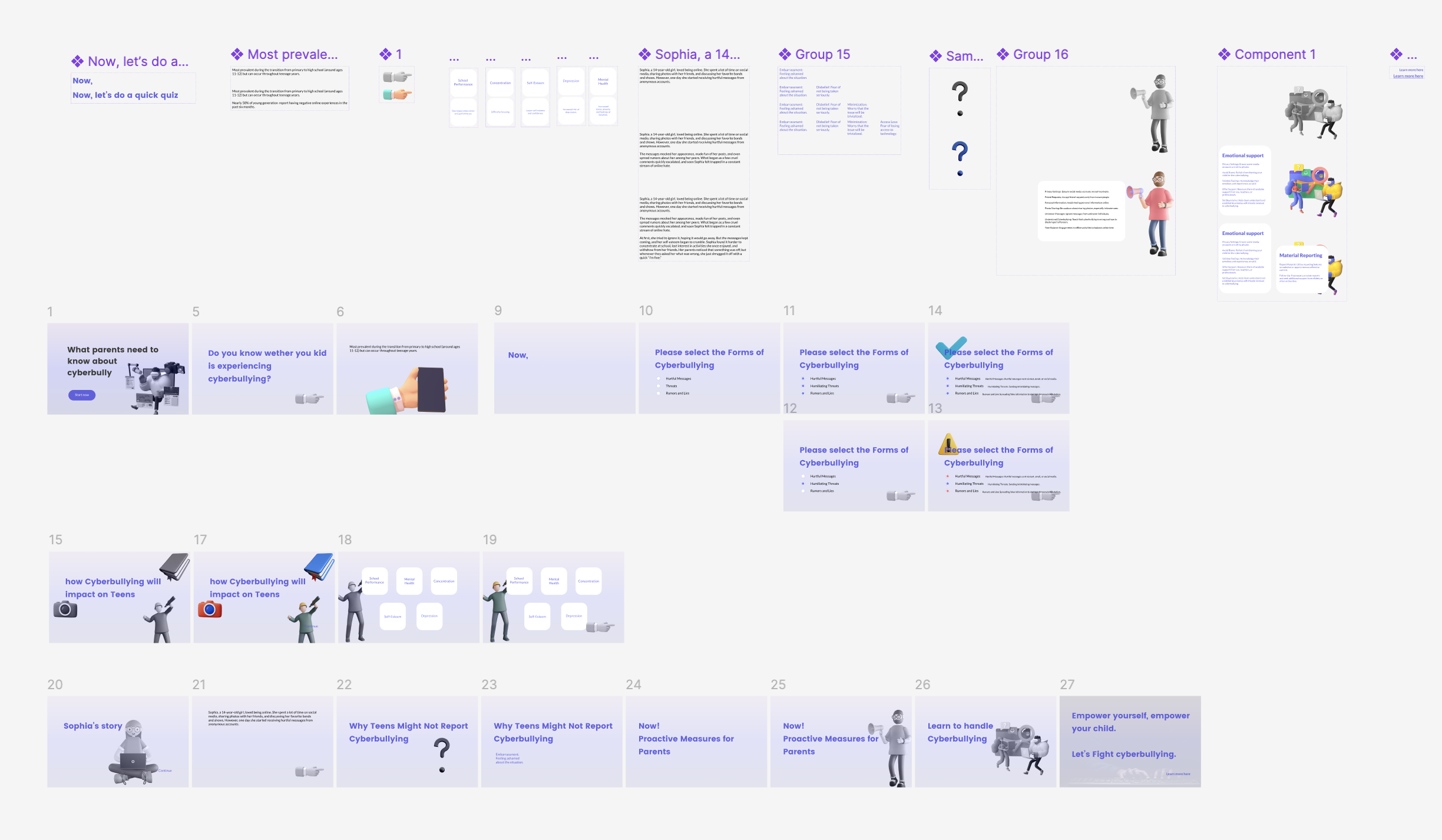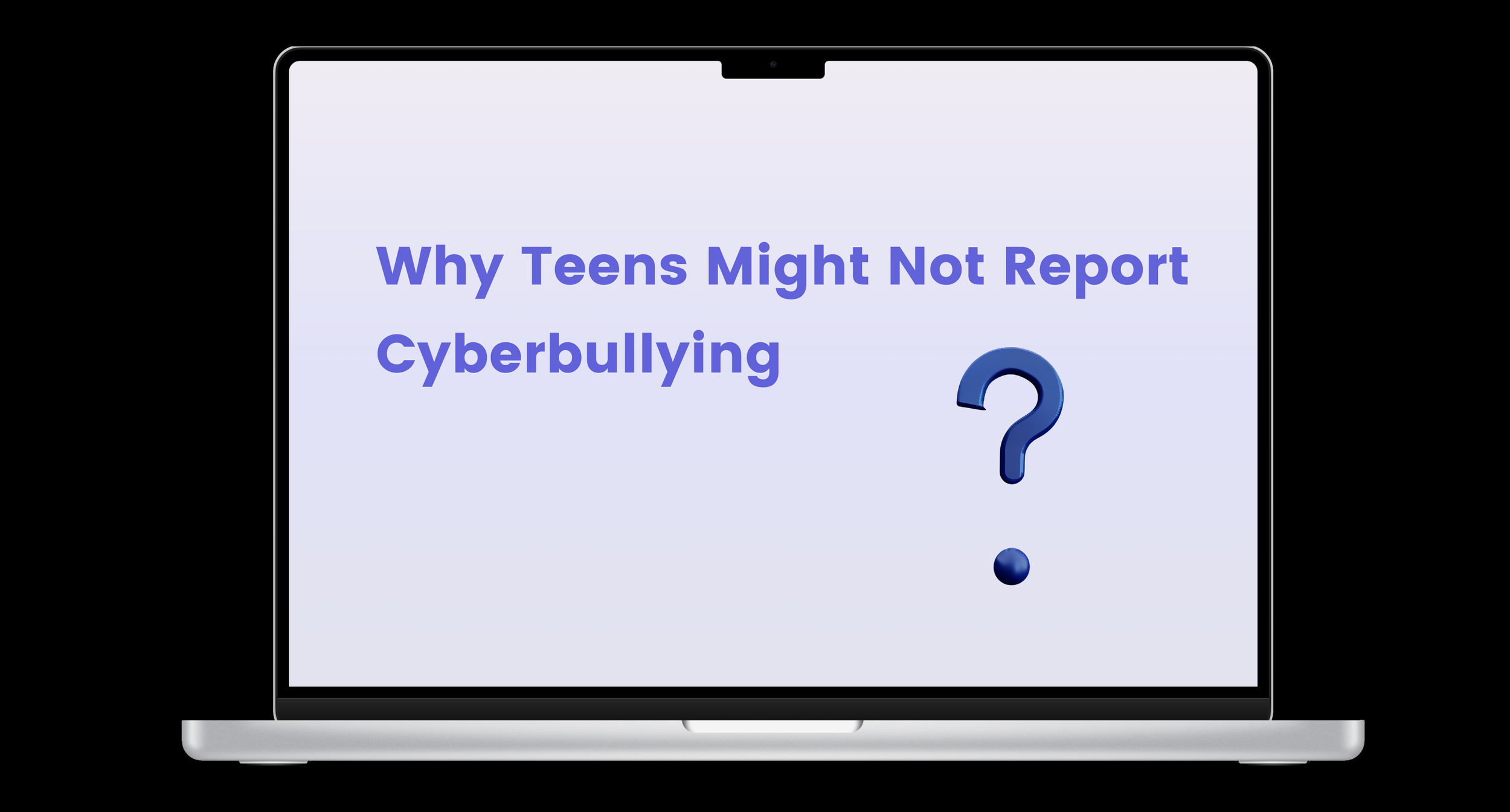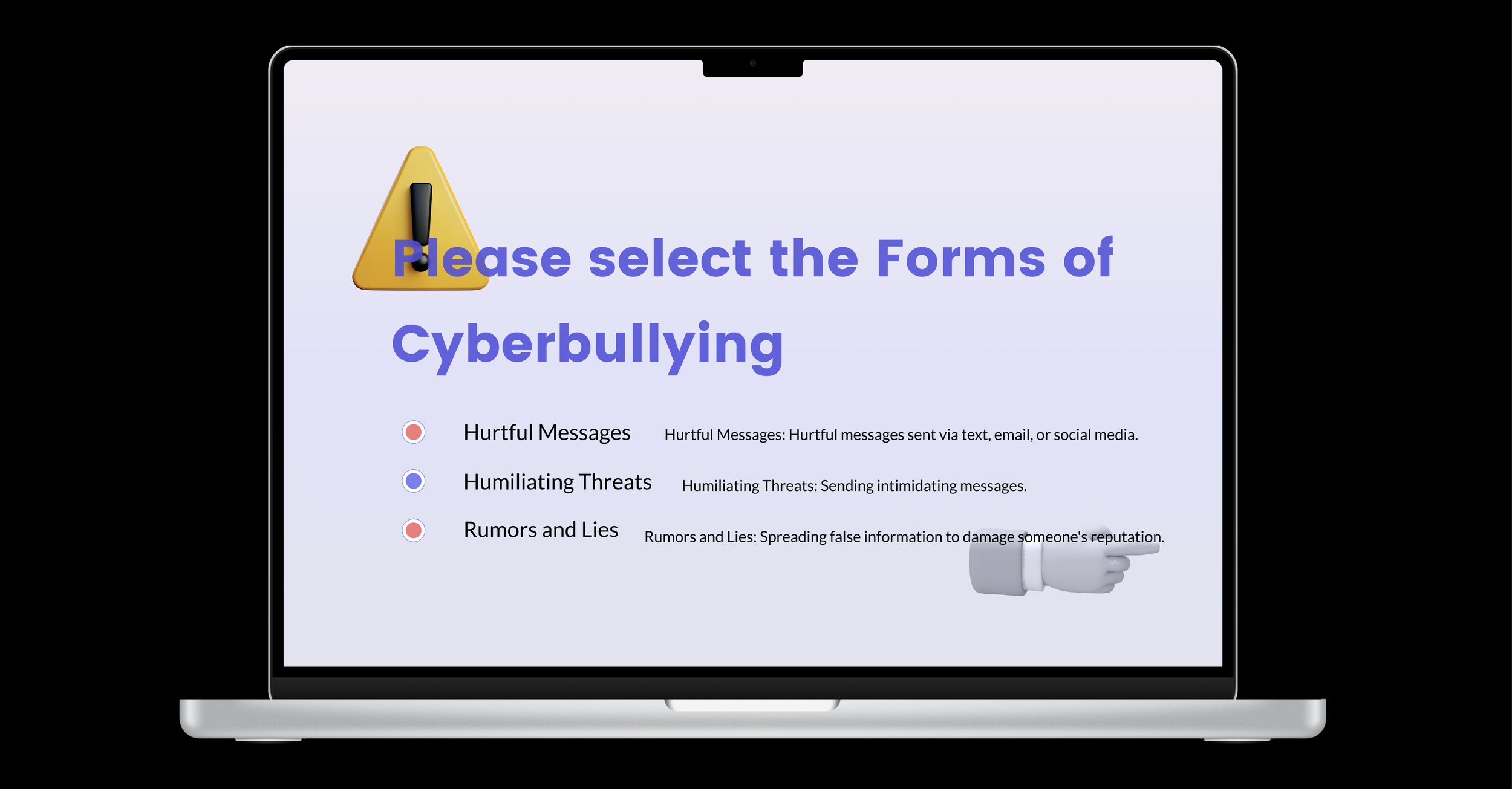Cyberbullying Education for Parents
Empower yourself, empower your child. Fight cyberbullying.
Project Goal
I wish a world where teens can explore the digital landscape without fear. But with the rise of cyberbullying, this reality often feels out of reach.
This project was born from a deep concern for the well-being of our youth. By educating parents with the knowledge and tools they need, we hope to build a safer, more supportive online environment for teens. No longer will parents feel helpless in the face of cyberbullying. Instead, they will be empowered to protect their children and foster their growth.
Process
Action Map
I began the process by leveraging my background in human development and psychology to collaborate with a Subject Matter Expert (SME) in online safety. We created an action map that not only identified key preventative measures but also considered the psychological impact of cyberbullying on teens. With a focus on emotional well-being, we prioritized actions that parents should take to address both the immediate effects of cyberbullying and the longer-term mental health outcomes.
2. Storyboard
Scenario: Cyberbullying at School
Prompt: You’ve noticed that your child, Sophia, has been more withdrawn lately. She’s spending a lot of time online and seems anxious. As a parent, you're concerned that something might be wrong. You’ve heard about cyberbullying but aren't sure how to approach the topic with her.
Question: What’s your first step to address the situation?
Choice A: Ask Sophia directly if she’s being cyberbullied.
(fade to black…fade in)
Consequence Part 1: Sophia hesitates and shrugs off your question. She says, “It’s nothing, really,” and avoids making eye contact. You sense she’s holding back but don’t want to push her too hard. (fade out)
Consequence Part 2: (fade in) Over the next few weeks, her mood worsens. She becomes more distant, and her school performance begins to decline. You wish you had approached the conversation differently. (fade out…fade in)
Consequence Part 3: You decide to do some research and find a helpful resource about how to have a supportive conversation with your child about cyberbullying. (fade out)
Choice B: Create a safe environment for an open discussion about her online activity.
(fade to black…fade in)
Consequence Part 1: You sit down with Sophia during a quiet moment and ask her open-ended questions about how she’s feeling. You say, “I’ve noticed you’ve seemed a little down lately. How’s everything going online?” (fade out)
Consequence Part 2: (fade in) Sophia pauses, but she starts to open up. She shares that some classmates have been sending hurtful messages, but she didn’t want to tell you because she was embarrassed and afraid you’d take away her phone. (fade out…fade in)
Consequence Part 3: You reassure her that she’s not in trouble and that her feelings are valid. Together, you talk about how to block and report the bullies, and you help her adjust her privacy settings. She feels relieved and supported. (fade out)
Choice C: Monitor her online activity without directly talking to her.
Consequence Part 1: You set up parental controls and start monitoring her online activity more closely. Over the next few days, you see some suspicious messages but aren’t sure how to bring it up without breaching her trust. (fade out)
Consequence Part 2: (fade in) Sophia becomes aware that you’re monitoring her and becomes more withdrawn, feeling like her privacy is being invaded. She starts spending less time at home and more time with friends, avoiding any conversation with you. (fade out)
Consequence Part 3: You realize that monitoring without an open dialogue isn’t working. You decide to create a more supportive environment and discuss her online experiences with care and empathy. (fade out)
I began the process by leveraging my background in human development and psychology to collaborate with a Subject Matter Expert (SME) in online safety. We created an action map that not only identified key preventative measures but also considered the psychological impact of cyberbullying on teens. With a focus on emotional well-being, we prioritized actions that parents should take to address both the immediate effects of cyberbullying and the longer-term mental health outcomes.
Using my knowledge of cognitive development and behavioral change, I crafted a text-based storyboard that outlined strategies for parents to open dialogue with their children and recognize the signs of cyberbullying. The content was designed to be empathetic, offering practical steps grounded in psychological theory to help parents support their teens emotionally.
After receiving feedback from the SME on the storyboard, I designed visual mockups using Xd and Figma, becasue it can create Visual component more efficently. Drawing on psychological principles of engagement and learning, I ensured that the visual elements were intuitive, reducing cognitive load for parents as they navigated the resource. The mockups included easy-to-access resources like micro-learning and links to videos, empowering parents to take immediate action while considering the emotional state of their child.
3. Visual mockup
Next, I developed a visual storyboard that integrated the psychological insights with user-friendly design. I added programming notes to ensure that the animations, interactive links, and other multimedia elements were aligned with the learner’s psychological needs—offering both emotional support and actionable steps in managing cyberbullying.
My background in psychology was essential here as I ensured the content was not just informative but also emotionally resonant with parents, encouraging them to adopt proactive measures. After reviewing feedback from the SME, which included refining the balance between educational content and emotional support, I completed the development phase in Storyline.
Finally, I conducted user testing with a small group of parents, applying my expertise in human behavior to gather insights on how effectively the resource addressed their emotional and cognitive needs. Based on this feedback, I made final adjustments, ensuring the project was both psychologically sound and user-friendly.ee the consequences of their choices in a low-risk setting.
4. Interactive Prototype
I used the interactive prototype to test the flow of the learning module, focusing on how parents would navigate through the choices and respond to the scenarios. This allowed me to refine each slide’s layout and animation, ensuring that the visual cues and interactive elements were functioning as intended.
Feedback from Test Users: I received valuable feedback from a test group of parents who noted that they wanted more hands-on interaction with the scenarios. In response, I added quiz . This not only increased engagement but also made the scenarios more immersive, simulating real-life decision-making.
Iterative Improvements: After testing these interactions, I further refined the animations to reflect the consequences of each choice more clearly.
By creating the interactive prototype in this way, I was able to gather feedback early and iterate on the design, enhancing the user experience before moving to full project development.









